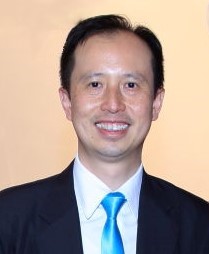How to lead the team, if the objective is “Mission Impossible”? 如何帶領團隊實現「不可能的任務」?
How to lead the team, if the objective is “Mission Impossible”?
如何帶領團隊實現「不可能的任務」?

If we ask ten different managers what leadership is about, we might find ten different answers. However, we might also find a similar one, and that is “to achieve certain objectives”. This is, in fact, very logical. If achieving any objectives are not needed, then there is no need to talk about leadership. Thus, we need to set our objectives by using the SMART principle.
如果我們向十位經理問領導力是什麼,我們可能會找到十個不同的答案。但是,我們也可能會找到一個共通點,就是要「去達成某些目標」。實際上,這是非常合乎邏輯的。如果不需要實現任何目標,就無需談論領導力。有見及此,我們需要運用SMART的原則來設定目標。
SMART stands for Specific, Measurable, Achievable, Relevant, and Time specific. As a leader, setting an objective wouldn’t be as difficult if you have all of these elements, but to be frank,
having it to be Achievable is sometimes unlikely to happen for certain objectives.
SMART代表特定(Specific)、可度量(Measurable)、可實現(Achievable)、相關(Relevant) 和具體時間(Time specific)。作為領導者,只要考慮這些 要素,設定目標就不會那麼困難,但坦率地說,某些目標有時不太可能實現。
The key challenge of a leader is how to lead a team to meet some unachievable, or seemingly unachievable, objectives. If the team views that the objective is unachievable, they might lose their drive and morale. People always remark that such unachievable objective is “Mission
Impossible”.
領導者面臨的主要挑戰,就是如何去帶領團隊實現某些無法實現或看似無法實現的目標。如果團隊都認為目標無法實現,他們可能會失去動力和士氣。人們總是標注這樣不能達到的目標是「不可能的任務」。
There are several groups of leadership theories, such as Trait, Behavioral, Contingency / Situational, and Charismatic / Transformational leadership. Based on my practical experience,
complement those leadership theories, we could “borrow” the concept of Kotter’s Eight Steps
Change model to manage that leadership challenge. In other words, we can conclude that achieving an objective is to change individual/team’s views, beliefs, and behaviors to make things happen.
領導理論有幾種,例如特質、行為、應急/形勢,以及魅力/變革型領導。根據我的實戰經驗,輔以領導力的理論,我們可以「借用」科特的八步變革模型來應對那些領導力挑戰。換句話說,我們可以得出的結論是,實現目標就是改變個人/團隊的觀點、信念和行為,以達成目標。
As discussed earlier, the biggest challenge of today’s leaders is to lead the team to meet “Mission Impossible”. Kotter’s first step is to “create urgency”. A good leader will interpret
the backgrounds and understand the “real” meaning of those “impossible” objectives, then explain to the team why those objectives are important, critical and urgent, especially the
benefits and impacts to the team.
如前所述,當今領導者面臨的最大挑戰是帶領團隊實現「不可能的任務」。科特的第一步是「製造迫切性」。一個好的領導者將理解背景及那些「不可能」目標的「真實」含義,然後向團隊解釋為何這些目標是重要、關鍵和緊急,尤其是對團隊的好處和影響。
The second step is “to form a powerful coalition”. A leader should understand the strengths and weaknesses of each team member, then build a team that best suits the requirements of
each objective. According to Belbin Team Roles, there are nine different team roles that the leader needs to match the team members’ characteristics. This is a crucial process for the
leader as he/she would need to delegate the tasks to the team members. During this process, mutual trust should be established between the leader and team members. As the team roles are assigned based on the capabilities of team members, the leader will have better confidence on team achievement, while team members will be more motivated because they have better chances to demonstrate their abilities.
第二步是「組成強大的聯盟」。領導者應了解每個團隊成員的優勢和弱點,再因應每個目標要求建立一個最適合的團隊。 根據「貝爾賓團隊角色」理論,領導者可運用九種不同的團隊角色來配對團隊成員的特徵,這是領導者委派任務給團員時,至關重要的程序。過程中,領導者需與團隊成員建立互信。由於委派的任務是根據團隊成員的能力而分配,因此領導者將有更大信心令團隊達成目標,同時團隊成員會更有動力,因為他們有更多機會展示自己的能力。
Steps 3 and 4 are to “create and communicate vision”. A leader needs to “define clearly” on the objective. Even for “Mission Impossible”; it could be broken down into “Base” and “Stretch” portions. “Base” is the portion of objective where the team would have high confidence to
achieve. “Stretch” is the incremental part where the team would not have confidence. For example, if the team needs to achieve $120 sales target, but has confidence to achieve $100
(based on past experiences), then $100 is the “base”, and $120 is the “stretch” target. Thus, the leader could formulate two strategies on how to guarantee the team to achieve the “base”, and the “stretch” respectively. That’s a very important step because this will help the team to realize that “Mission Impossible” is not that “impossible”, so as to keep the team’s momentum.
第三個和第四步驟是「創建和傳達願景」。領導者需要為目標設定「明確定義」。即使是「不可能的任務」,仍可分為「基礎」和「延伸」部分。「基礎」是團隊將能高度自信地實現的目標部分。「延伸」則是團隊未有信心能達成的部分。例如,團隊需要實現$120的銷售目標,但他們有信心實現$100(基於過去的經驗),則$100是「基礎」,$120是「延伸」目標。因此,領導者可以就如何保證團隊達成「基礎」和「延伸」目標而制定兩種相應的策略。 這是非常
重要的一步,因為這將幫助團隊認識到「不可能的任務」並非完全「不可能」,從而保持團隊的動力。
During the execution of strategy, obstacles will be faced normally, especially when the team is working towards the “stretch” after having achieved the “base”. As stated in Step 5, the leader needs to help the team to proactively remove the obstacles during the execution. With this
support, team members will feel that they are not alone, and the leader is on the same boat with them. Thus, this will not only help to achieve the objective, but also help to build trust
between the leader and the team.
在執行策略的過程中,通常會遇到障礙,尤其是當團隊在達到「基礎」後,朝著「延伸」目標努力時。 這就如第五步所述,在團隊執行任務的過程中,領導者需要主動地幫忙消除障礙。 在這種支持下,團隊成員會感到自己並不孤單,明白領導者與他們同在一條船上。故此,這不僅有助於實現目標,更有助於在領導者與團隊之間建立信任。
The next important steps are to “create short term wins” and “build on the change”. A leader should give recognition continuously to the team on their journey to achieve the objective,
even though they have not yet achieved the “base” or “stretch”. This will help the team to keep their momentum by giving them positive reinforcement on their efforts. It will also help create a team spirit of “We can do it!”
重要的下一步是「創造短期勝利」並「從變化中創建」。領導者應該在團隊實現目標的過程中不斷給予認可,即使他們尚未實現「基礎」或「延伸」目標。透過對團隊正面的鼓勵及認可,有助團隊保持動力,更有助於樹立「我們能做到!」的團隊精神。
The last one is “Make it Stick”. No matter the “Mission Impossible” objective is achieved or not, a leader needs to make the “We can do it!” team spirit stick into the team culture. After all, leading a team is not a one-time job. A good team culture must be established and carried on in order to make the team become more invulnerable to the challenges in the future.
最後是要「堅持下去」。無論能否實現「不可能的任務」目標,一個領導者都要於團隊文化中,創建「我們能做到!」的團隊精神。畢竟,領導團隊並不是一次性的工作。必需創建並延續良好的團隊文化,讓團隊能在未來的挑戰中,變得更加無懈可擊。
To summarize, a successful leader is the one who can build trust with the team, so that all team members are willing to perform their best to achieving the objective, no matter it is “Mission Impossible” or not!
總括而言,一個成功的領導者就是可以與團隊建立互信的人,因此,無論「不可能的任務」是否存在,都能引令團隊的所有成員,盡自己最大的努力去實現目標!
Author’s Profile 作者簡介
 Mr. Sam Chan
Mr. Sam Chan
Sam holds a Master of Business Administration from CUHK, specialized in Finance, Marketing and International Business. Sam worked as a senior management in large MNC, with more than 20 years’ sales and marketing experience. He also has extensive people management experience in leading teams through different changes.
擁有香港中文大學工商管理碩士,專注於金融、巿場及國際商業。曾於跨國企業任高級管理人員,有超過二十年的銷售及巿場經驗;對於不同轉變中領導團隊,具備豐富的人事管理經驗。
Subscribe to The Sunderland HK for FREE to get the latest news and gain career knowledge and skills!
立即免費訂閱The Sunderland HK,獲取最資訊,並學習就業知識及技巧!




